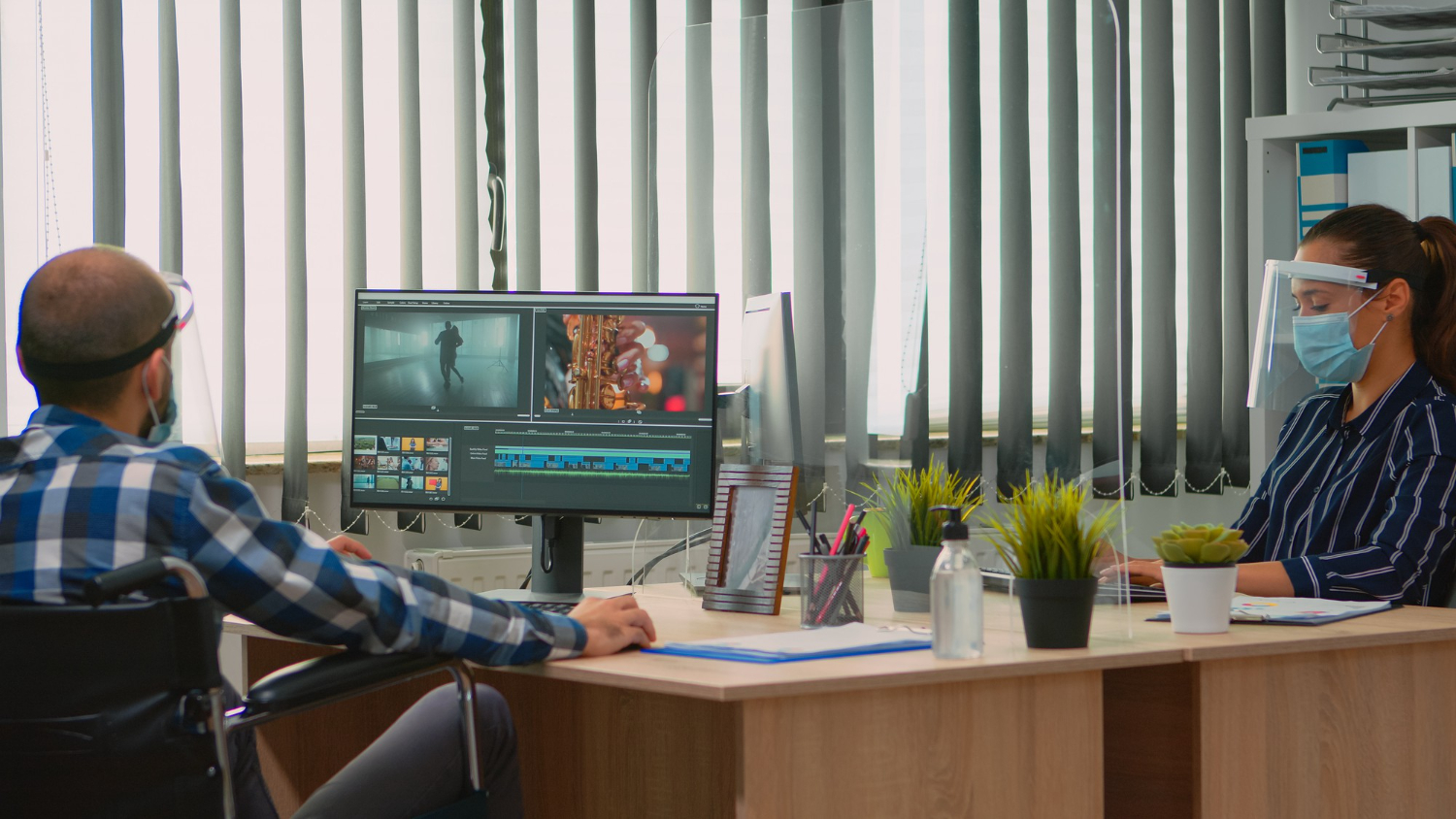Creating stunning motion graphics in After Effects can seem daunting at first, but with a little guidance, anyone can master the basics. This powerful tool lets you bring your creative ideas to life through animations, effects, and transitions that elevate your projects.
Embarking on a journey with After Effects begins with understanding its interface. Think of it as your creative playground, filled with all the tools you need to design and animate. Once you’re comfortable navigating the interface, you can start creating animations with keyframes. These are like signposts that tell your graphics how to move and change over time.
After grasping the basics, it’s time to have fun with effects and transitions that add flair to your graphics. They can transform ordinary visuals into eye-catching content. Sharing your creations is just as important as making them, so knowing how to export your work ensures it looks great wherever it’s viewed.
Understanding the After Effects Interface
Getting to know the After Effects interface is like learning to navigate a new playground. It’s essential to feel comfortable with this environment to create amazing animations and graphics. The interface has many panels and tools that may seem confusing at first, but each has a specific function.
Start with the main window, which is split into several key panels. The Project Panel is where you import and organise your media files and compositions. Think of this as your backpack; it carries everything you need for your project. Below the Project Panel is the Timeline Panel. This is like your canvas, where you assemble and manage your layers and keyframes.
On the right side, you’ll find the Effects & Presets Panel. It’s your toolkit for adding special touches to your projects. The Composition Panel is your viewing area where you see your creation in action. This is where you can preview how your work comes together.
Familiarise yourself with the navigation tools at the top. The Selection Tool lets you pick and move objects, while the Hand Tool allows you to pan around your composition. Use the Zoom Tool to focus on details or get a broader overview of your project.
When setting up your workspace, remember:
– Customise Layouts: Arrange panels in a way that suits your workflow.
– Use Shortcuts: Learn basic keyboard shortcuts to save time.
– Experiment with Panels: Don’t hesitate to explore each panel’s features.
By understanding these elements, you can work more efficiently and focus on creating stunning visuals.
Creating Basic Animations with Keyframes
To bring your graphics to life, learning to use keyframes in After Effects is crucial. Keyframes are like breadcrumbs for animations. They mark the start and end of an animation, telling your graphic where to move or what changes to make over time.
Start by choosing an element in your Project Panel. Drag it onto your Timeline Panel to begin. To animate it, you’ll set keyframes on the timeline. For instance, if you want a ball to move from left to right, your first keyframe marks the starting position, and a second one marks the ending position. The space between them creates the motion.
Adding keyframes is easy:
1. Position Your Element: Place the object where you want it to start.
2. Set the First Keyframe: Click the stopwatch icon next to the property you want to animate, like position or scale.
3. Move Ahead in Time: Drag the playhead along the timeline to where you want the animation to end.
4. Adjust Your Element: Move or scale the object to its final position, automatically creating a new keyframe.
To smooth out the motion, use the Easy Ease feature. It softens the start and end of your animation, making it more natural. Select your keyframes, right-click, and choose Easy Ease for a polished effect.
To troubleshoot common mistakes, keep these tips in mind:
– Check Keyframe Placement: Ensure keyframes are set correctly on the timeline.
– Watch Playback Speed: Adjust the timeline duration to slow down or speed up animation.
– Use the Preview Panel: Always preview your animation before finalising.
Mastering keyframes and basic animations opens up endless possibilities for creating dynamic content. With practice, you’ll be animating like a pro in no time.
Adding Effects and Transitions to Enhance Graphics
Adding effects and transitions can transform your motion graphics from ordinary to amazing. After Effects offers a wide array of effects that allow you to add flair and personality to your animations. Knowing which effects to use and how to apply them can significantly enhance your projects.
Start by exploring the effects panel in After Effects. You’ll find various categories like blur, colour correction, and distortion. Each category contains multiple effects that can make your graphics stand out. For example, the blur effect can create smooth transitions, while colour correction can adjust hues to fit your desired mood.
Transitions help create seamless movement between scenes. Common transitions include fades, wipes, and dissolves. Each transition style can change the feel of your animation. Fades are smooth and gradual, wipes add a dynamic touch, and dissolves blend scenes gracefully. Applying these transitions thoughtfully can improve the flow of your animation.
Use keyframes to fine-tune your effects and transitions. Keyframes let you set the start and end points of an effect, offering precision in how it appears and disappears. This lets you control how quickly or slowly changes occur, making your animation look polished and professional.
– Explore Effects Panel: Try out effects in different categories to find what works best.
– Choose Suitable Transitions: Use fades, wipes, and dissolves to match the animation’s style.
– Fine-Tune with Keyframes: Employ keyframes for precise control over effects and transitions.
Practice these skills regularly to make your motion graphics more engaging and visually stunning.
Tips for Exporting and Sharing Your Motion Graphics
Once you’ve finished your motion graphics masterpiece, it’s time to export and share it. Proper exporting ensures your work looks great wherever it’s viewed, whether on a social media platform or a large presentation screen.
First, select the right export settings. Consider the platform where your animation will be shared. For web sharing, choose H.264 format for its great quality and small file size. For high-quality broadcast, opt for formats like TIFF or MOV.
Adjust the resolution and frame rate based on your project needs. High resolution is important for detailed visuals, while a smooth frame rate keeps animations looking fluid. Standard settings are usually 1080p resolution and 24 to 30 frames per second.
Use the render queue in After Effects for efficient exporting. Add your composition to the render queue and set the output module to match your chosen format and settings. Double-check all settings before you start to avoid mistakes and ensure quality.
– Select Correct Export Settings: Match the format to the platform’s needs, like H.264 for online.
– Adjust Resolution and Frame Rate: Maintain clarity with suitable settings for each project.
– Utilise Render Queue: Ensure correct settings for efficient and error-free exporting.
By following these guidelines, you ensure your audience enjoys your motion graphics as intended, no matter where they are.
Conclusion
Mastering After Effects requires a blend of creativity and technical skills. By diligently adding effects and transitions and knowing how to export and share your work correctly, you can elevate your motion graphics to new heights. These techniques not only make your animations more eye-catching but also ensure they’re shared seamlessly across various platforms.
Developing proficiency in these areas boosts confidence in tackling more complex projects. As you become more skilled, you can explore new design territories and create more impactful and memorable animations. Each project becomes a learning opportunity, pushing you to refine your techniques and expand your artistic vision.
As you continue to craft compelling motion graphics, remember that practice plays a key role. With consistent effort and dedication, you will polish your skills and produce work that not only meets but exceeds your expectations and those of your audience. The better your graphics, the more effectively they can communicate and captivate.
Elevate your expertise by exploring our graphics and web designing courses online at eCare Upskill. Whether you’re starting or looking to advance your skills, we provide comprehensive resources to help you excel in animation and design. Join us today and take a significant step towards mastering the art of motion graphics!



